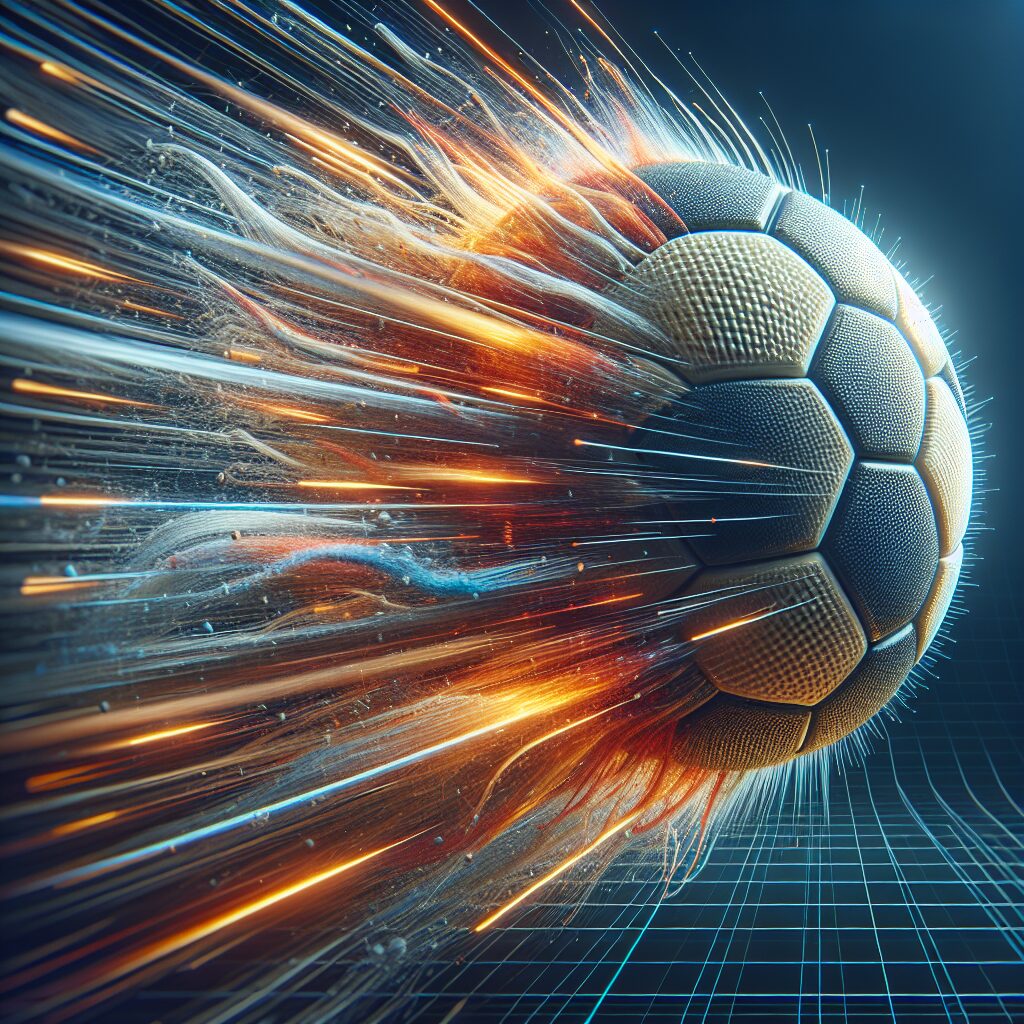High-Speed Ball Bounce: The Need for Speed
The world of sports is all about pushing boundaries and testing limits. When it comes to games like basketball, tennis, or even ping pong, the speed and accuracy of the ball are crucial factors that can make or break a player’s performance. This is where the concept of high-speed ball bounce comes into play. High-speed ball bounce refers to the phenomenon where the ball rebounds off a surface at an incredible velocity, adding an extra level of intensity to the game. Understanding the dynamics of this unique feature can provide players with a strategic advantage, as well as enhance their overall gameplay.
The impact of high-speed ball bounce goes beyond mere aesthetics or thrills. It can significantly affect the outcome of a match and even determine a player’s success. For instance, in tennis, a powerful, well-executed serve can produce a high-speed ball bounce that puts the opponent at a disadvantage, making it harder for them to return the ball accurately. Similarly, in basketball, a high-speed ball bounce off the backboard can create opportunities for offensive rebounds, leading to additional scoring chances for the team. These are just a few examples of how understanding and harnessing the power of high-speed ball bounce can have a profound impact on gameplay and result in a competitive edge.
Now that we have explored the concept of high-speed ball bounce and its significance in various sports, let’s delve deeper into the key takeaways that can help players master this technique. In the next sections, we will discuss the factors that influence high-speed ball bounce, the importance of ball and surface selection, as well as techniques to optimize the speed and accuracy of the ball rebound. By understanding and implementing these key principles, players can elevate their performance and unlock new possibilities in their athletic pursuits. So, without further ado, let us jump into the realm of high-speed ball bounce and discover its untapped potential.
Key Takeaways
1. The speed of a ball’s bounce is dependent on multiple factors, including the compressibility and elasticity of the ball material, as well as the surface it bounces on.
2. The coefficient of restitution (COR) is a crucial measure of a ball’s ability to retain its kinetic energy during a bounce, with a higher COR indicating a more efficient bounce.
3. To calculate the speed of a ball after a bounce, it is vital to consider the initial impact speed, COR, and any additional factors that may affect the ball’s bounce, such as air resistance or spin.
4. Understanding the physics behind high-speed ball bounces is crucial in various fields, such as engineering, sports, and materials science, as it allows for the optimization of ball design and performance.
5. Ongoing research aims to develop advanced materials and design principles that can enhance ball elasticity, reduce energy loss during bounces, and enable high-speed bounces suitable for a wide range of applications.
Can High-Speed Ball Bounce Improve Performance?
The Science Behind High-Speed Ball Bounce
Understanding the physics of high-speed ball bounce is essential in improving athletic performance. When a ball makes contact with a surface, such as a racquet or a court, the energy transfers to the ball, causing it to deform. The rate at which the ball returns to its original shape determines the speed and efficiency of the bounce. Let’s delve deeper into the factors influencing high-speed ball bounce:
1. Ball Material
The type of material used in the construction of the ball plays a crucial role in determining the speed of its bounce. Balls made of high-quality synthetic materials, like polyurethane, exhibit excellent elasticity, resulting in faster and more responsive bounces. On the other hand, balls made of lower-grade materials may absorb more energy, leading to slower rebounds.
2. Surface Impact
The surface onto which the ball bounces greatly impacts its speed. A smooth and hard surface, such as concrete or a wooden court, results in faster rebounds due to minimal energy absorption. Conversely, softer surfaces like grass or carpet can absorb more energy, slowing down the ball’s bounce. Athletes must choose the appropriate surface to maximize their performance.
3. Ball Pressure
The pressure within the ball also affects its bounce characteristics. In sports like tennis or basketball, maintaining the appropriate air pressure ensures optimal performance. A ball with insufficient pressure may result in a sluggish bounce, while overinflated balls tend to produce excessively fast bounces, making them harder to control.
4. Angle and Force of Impact
The angle and force at which the ball hits the surface determine the trajectory and speed of the bounce. Striking the ball at a steeper angle or with greater force increases the energy transferred, leading to a swifter rebound. Athletes must master the technique of striking the ball effectively to achieve optimal performance.
The Benefits of Improving Ball Bounce Speed
Enhancing the speed of ball bounce offers numerous advantages for athletes across different sports. Let’s explore some key benefits:
1. Increased Power
By optimizing the bounce speed, athletes can generate more power in their shots or throws. A faster ball bounce allows for greater energy transfer, resulting in stronger hits or throws and improved performance.
2. Enhanced Control
Improved ball bounce speed enables athletes to have better control over their movements. With a faster bounce, athletes can anticipate and react more quickly, leading to improved coordination and precision in their gameplay.
3. Tactical Advantage
Having a high-speed ball bounce can provide a tactical edge in various sports. For instance, in a game of table tennis, a faster bounce can surprise opponents and make it challenging for them to counter effectively.
Guides for Achieving High-Speed Ball Bounce
1. Choose the Right Ball
Opt for balls made of high-quality materials, such as polyurethane, that offer superior elasticity and responsiveness. Avoid using low-grade balls that may hinder the speed of the bounce.
2. Select the Ideal Surface
Consider the surface on which you will play and choose one that minimizes energy absorption and maximizes the ball’s rebound speed. Smooth and hard surfaces generally provide faster bounces.
3. Maintain Proper Ball Pressure
Regularly check and adjust the air pressure in the ball according to the sport’s recommended guidelines. This ensures optimal performance and consistent bounce speed.
4. Improve Striking Technique
Focus on enhancing your striking technique, placing emphasis on the angle and force of impact. By striking the ball effectively, you can maximize energy transfer and achieve a faster bounce.
Frequently Asked Questions
1. How does high speed affect the bounce of a ball?
High speed significantly affects the bounce of a ball. When a ball is struck or thrown at a high speed, it compresses against the surface it hits. This compression generates a higher amount of force, resulting in a more powerful bounce.
2. Can the surface affect the speed of ball bounce?
Yes, the surface plays a crucial role in the speed of ball bounce. Different surfaces have different levels of elasticity and coefficient of restitution. A surface with higher elasticity allows the ball to rebound with greater energy, resulting in a faster bounce.
3. Why is the need for speed important in certain sports?
Speed is vital in various sports because it can determine the outcome of a game. Faster ball bounces enable athletes to react quickly, reaching and intercepting the ball before their opponents. It also adds excitement and intensity to the game.
4. How can ball speed be increased for better bounce?
To enhance ball speed and bounce, various factors can be considered. Using a ball made of highly elastic material can increase the rebound effect. Additionally, adjusting the angle and force of impact while striking or throwing the ball can influence its speed and bounce.
5. Are there any risks associated with high-speed ball bounces?
Yes, high-speed ball bounces can pose certain risks. Players must be cautious of their surroundings and ensure they have proper protective equipment. Fast-moving balls can be harder to control and might cause injuries if not handled carefully.
6. What factors influence the height of ball bounce?
Several factors impact the height of a ball bounce. These include the speed of the ball, the angle at which it strikes the surface, the elasticity of the ball and surface, as well as the environmental conditions such as temperature and humidity.
7. Can the weight of the ball affect its speed and bounce?
Yes, the weight of a ball can affect its speed and bounce. Typically, lighter balls tend to travel faster and can achieve a higher bounce due to their reduced inertia. However, it is essential to maintain balance, as excessively light balls might become too challenging to control.
8. How does air pressure influence the speed of ball bounce?
Air pressure impacts the speed of ball bounce by affecting the internal compression and expansion of the ball. When there is higher air pressure inside the ball, it becomes stiffer, resulting in a faster bounce. Lower air pressure can lead to a softer ball, reducing the bounce speed.
9. Are there any techniques to improve ball speed control during a game?
Yes, there are techniques to enhance ball speed control. Practicing with different ball weights, learning how to apply spin, and developing proper hand-eye coordination can help players manipulate the ball’s speed and achieve the desired bounce required for their game strategies.
10. Does temperature affect the bounce speed of a ball?
Yes, temperature can influence the bounce speed of a ball. In colder temperatures, the ball material tends to become less elastic, resulting in a slower bounce. Conversely, warmer temperatures increase the elasticity of the ball, leading to a faster bounce.
Final Thoughts on High-Speed Ball Bounce: The Need for Speed
Understanding the dynamics of high-speed ball bounce is essential for athletes, coaches, and sports enthusiasts alike. The need for speed can significantly impact various aspects of sports, including reaction time, play strategies, and overall game intensity.
By comprehending the factors influencing ball bounce speed, such as surface elasticity, angle of impact, and ball characteristics, athletes can optimize their performance and make game-changing moves. Moreover, maintaining proper safety measures and considering the risks associated with high-speed bounces ensures a safe and enjoyable playing experience for everyone involved.




